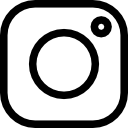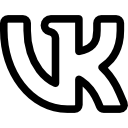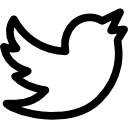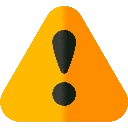gh the body, dividing it into anterior and posterior regions called? 1) A) transverse B) sagittal C) median D) frontal Answer: D Explanation: A ) B) C) D) 2) One of the functional characteristics of life is irritability. Thisrefersto . 2) A) the nervous system causing all living things to sometimes experience anger B) sensing changes in the environment and then reacting or responding to them C) the necessity for all organisms to reproduce D) indigestible food residues stimulating the excretory system Answer: B Explanation: A ) B) C) D) 3) Which of the following describes a parasagittal plane? 3) A) two cuts dividing the body into left and right halves B) a transverse cut just above the knees C) any sagittal plane except the median D) any cut dividing the body into anterior and posterior Answer: C Explanation: A ) B) C) D) 4) Which one of the following systems respondsto environmental stimuli? 4) A) nervous B) lymphatic C) immune D) muscular Answer: A Explanation: A ) 3 B) C) D) 5) The cavities housing the eyes are called _ cavities. 5) A) cranial B) nasal C) orbital D) frontal Answer: C Explanation: A ) B) C) D) 4 6) If you consider your home air conditioner in terms of homeostasis, then the wall thermostat would be the _. A) control center B) effector C) receptor D) variable Answer: A Explanation: 6) A ) B) C) D) 7) The dorsal body cavity is the site of which of the following? 7) A) intestines B) liver C) lungs D) brain Answer: D Explanation: A ) B) C) D) 8) Choose the anatomical topic and definition that is not correctly matched. 8) A) Cytology: study of the structures in a particularregion. B) Gross anatomy: study of structures visible to the eye. C) Embryology: study of the changes in an individual from conception to birth. D) Microscopic anatomy: study of structures too small to be seen by the naked eye. Answer: A Explanation: A ) B) C) D) 9) The term pollex refersto the . 9) A) calf B) thumb C) fingers D) great toe Answer: B Explanation: A ) B) C) D) 10) The study of the heart may incorporate many aspects of anatomy but as a whole you A would say it is n anatomy. s A) developmental B) microscopic C) systemic D) gross w e 5 r: D Explanation: A ) B) C) D) 10) 6 11) What isthe posterior side of the patella called? 11) A) popliteal B) crural C) antecubital D) sural Answer: A Explanation: A ) B) C) D) 12) Which of these is not part of the dorsal cavity? 12) A) cranial cavity B) spinal cord C) thoracic cavity D) vertebral cavity Answer: C Explanation: A ) B) C) D) 13) An increased rate of breathing as a result of an increased buildup of carbon dioxide in the bloodstream would be best described as an example of _ . A) metabolism B) responsiveness C) maintaining boundaries D) excretion of metabolic waste Answer: D Explanation: 13) A ) B) C) D) 14) The anatomical positionis used . 14) A) only when a body is lying down B) rarely, because people don't usually assume this position C) as a standard reference point for directional termsregardless of the actual position of the body D) as the most comfortable way to stand when dissecting a specimen Answer: C Explanation: A ) B) C) D) 15) Which of the following organs orstructures would be found in the left iliac region? 15) A) stomach B) appendix C) liver D) intestines 7 Answer: D Explanation: A ) B) C) D) 8 16) An oblique cut is one that is cut . 16) A) vertical right and left B) perpendicular to vertical and horizontal C) horizontal right and left D) diagonally between the vertical and horizontal Answer: D Explanation: A ) B) C) D) 17) What isthe specific name for the hip region? 17) A) coxal B) manus C) pedal D) inguinal Answer: A Explanation: A ) B) C) D) 18) Which of the following describesthe operation of the heart and blood vessels? 18) A) systemic anatomy B) cardiovascular physiology C) systemic physiology D) cardiovascular anatomy Answer: D Explanation: A ) B) C) D) 19) Choose the following statement that is not completely correct regarding serous membranes.19) A) Serous membranes are divided into parietal and visceral membranes with a potential space between the two. B) Visceral pericardium coversthe surface of the heart, and parietal pericardium linesthe walls of the heart. C) Serous membranes secrete a watery lubricating fluid. D) Serosa are very thin, double- layeredstructures. Answer: B Explanation: A ) B) C) D) 20) The single most abundant chemicalsubstance of the body, accounting for 60% to 8 0 9 % of body weight, is _ . A) protein B) oxygen C) water D) hydrogen Answer: C Explanation: 20) A ) B) C) D) 10 21) What isthe main, general purpose of negative feedback? 21) A) to regulate excretion B) to maintain homeostasis C) to control all bodysystem tissues D) to keep the body's sugar high Answer: B Explanation: A ) B) C) D) 22) Homeostasisisthe condition in which the body maintains . 22) A) a relatively stable internal environment, within limits B) a dynamic state within an unlimited range C) the lowest possible energy usage D) a static state with no deviation from preset points Answer: A Explanation: A ) B) C) D) 23) Which body cavity protectsthe nervous system? 23) A) dorsal B) cranial C) thoracic D) vertebral Answer: A Explanation: A ) B) C) D) 24) cavities are spaceswithin joints. 24) A) Orbital B) Oral C) Synovial D) Nasal Answer: C Explanation: A ) B) C) D) 25) Which of the following imaging devices would best localize a tumor in a person's brain? 25) A) DSA B) MRI C) X ray D) PET Answer: B Explanation: A ) B) 11 C) D) 26) A structure that is composed of two or more tissues would be a(n) . 26) A) organ system B) complex tissue C) organ D) complex cell Answer: C Explanation: A ) B) C) D) 12 27) Average body temperature is _ degrees centigrade. 27) A) 68 B) 47 C) 37 D) 98 Answer: C Explanation: A ) B) C) D) 28) The parietal pleural would represent a serous membrane . 28) A) covering individual lungs B) covering the heart C) lining the thoracic cavity D) lining the abdominal cavity Answer: C Explanation: A ) B) C) D) 29) A good example of a positive feedback mechanism would be _ . 29) A) regulating glucose levelsin the blood B) enhancement of labor contractions C) body temperature regulation D) blood calcium level regulation Answer: B Explanation: A ) B) C) D) 30) Place the following in correct sequence from simplest to most complex: 1. molecules 2. atoms 3. tissues 4. cells 5. organ A) 2- 1- 3- 4- 5 B) 1- 2- 4- 3- 5 C) 2- 1- 4- 3- 5 D) 1- 2- 3- 4- 5 Answer: C Explanation: 30) A ) B) C) D) 13 31) Select the most correct statement. 31) A) Organ systems operate independently of each other to maintain life. B) The endocrine system is not a true structural organ system. C) The immune system is closely associated with the lymphatic system. D) Organ systems can be composed of cells or tissues, but not both. Answer: C Explanation: A ) B) C) D) 14 32) Which of the following statementsisthe most correct regarding homeostatic imbalance? 32) A) Positive feedback mechanisms are overwhelmed. B) Negative feedback mechanisms are functioning normally. C) It is considered the cause of most diseases. D) The internal environment is becoming more stable. Answer: C Explanation: A ) B) C) D) 33) What is a vertical section through the body, dividing it into left and right, called? 33) A) regional B) transverse C) sagittal D) frontal Answer: C Explanation: A ) B) C) D) 34) The heart lies in the _ cavity. 34) A) pericardial B) superior mediastinal C) pleural D) dorsal Answer: A Explanation: A ) B) C) D) 35) Which of the following would not be a functional characteristic of life? 35) A) maintenance of boundaries B) responsiveness to external stimuli C) decay D) movement Answer: C Explanation: A ) B) C) D) 36) Histology would be best defined as a study of . 36) A) cells B) cell chemistry C) the gross structuresof the body D) tissues Answer: D Explanation: A 15 ) B) C) D) 16 37) Which of the following are survival needs of the body? 37) A) nutrients, water, growth, and reproduction B) nutrients, water, atmospheric pressure, and oxygen C) nutrients, water, movement, and reproduction D) water, atmospheric pressure, growth, and movement Answer: B Explanation: A ) B) C) D) 38) The anatomical position is characterized by all of the following except . 38) A) palmsturned posteriorly B) body erect C) thumbs pointed laterally D) arms at sides Answer: A Explanation: A ) B) C) D) 39) Which of the following statementsistrue concerning feedback mechanisms? 39) A) Negative feedback mechanisms work to prevent sudden severe changes within the body. B) Positive feedback mechanisms always result in excessive damage to the host. C) Blood glucose levels are regulated by positive feedback mechanisms. D) Negative feedback mechanisms tend to increase the original stimulus. Answer: A Explanation: A ) B) C) D) 40) In which cavities are the lungs located? 40) A) mediastinum, thoracic, and ventral B) pleural, ventral, and thoracic C) pleural, dorsal, and abdominal D) pericardial, ventral, and thoracic Answer: B Explanation: A ) B) C) D) 17 Ans wer Key Testn ame: C1 1) D 2) B 3) C 4)
No review has been posted for this item yet
 Cookies!
Cookies!









